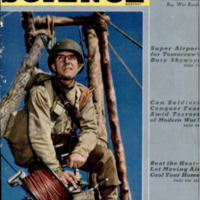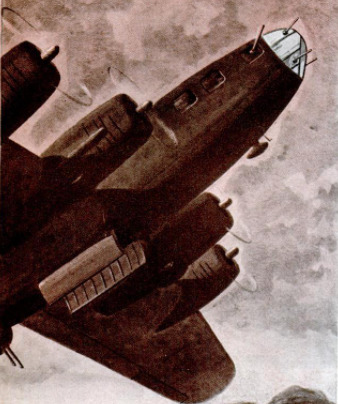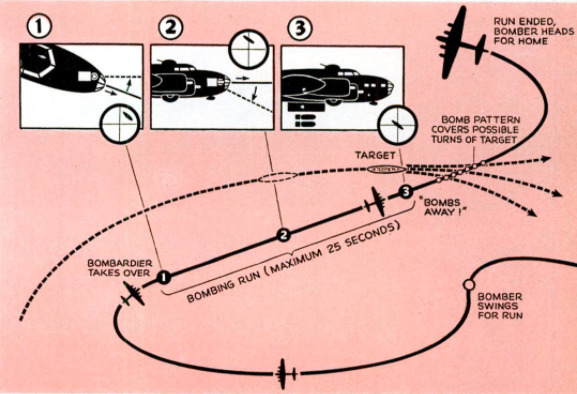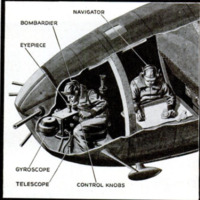U. S. A. A. F. bombing methods
Item
-
Title (Dublin Core)
-
U. S. A. A. F. bombing methods
-
Article Title and/or Image Caption (Dublin Core)
-
Title: What makes our bombsight so deadly?
-
extracted text (Extract Text)
-
MERICA'S famous Norden
bombsight—the ultra-
secret device which in-
spired our airmen's proud boast
that they could “drop a bomb
in a pickle barrel”——has now
been disclosed as a complex ar-
rangement of lenses, gyro-
scopes, and electrical connec-
tions which make mathemati-
cal corrections for every fac-
tor involved in the launching
of a bomb at a target, and even
control the operations of the
plane at the crucial moment of
bomb release.
The veil of secrecy over the
Norden sight was lifted recent-
ly in a distinctly discreet and
limited manner, mainly because
military authorities were cer-
tain that some of the instru-
ments had been captured by
the enemy as an unavoidable
incident of large-scale warfare. Even so, |
the secret remains safe for all practical
purposes. Because of its extreme complex-
ity and precision of manufacture, it would |
take the enemy years to mass-produce the
sight and train bombardiers in its use. |
‘The bombsight normally is mounted in the
plane's nose, behind a special panel of thick |
protective glass. It consists of three ele- |
ments encased in black metal. One element, |
containing the sighting telescope and ad- |
justing controls, is at the bombardier's
right; the second, containing the gyroscope,
is at his left, and the third is below the gyro.
This is a generalized description of how
the sight is used: Before beginning the
“run” on the target, the bombardier ad-
justs the sight for the chosen altitude and
speed of the plane, and sets the gyroscope
spinning with its axis perpendicular to the
ground. He then lines up the sight with the
plane’s actual direction and arms the bombs
preparatoryto dropping them.
The run itself lasts up to 25 seconds—
more than that gives the enemy flak too |
good a straight-moving target—and during
that time the bombardier is in effective com-
mand of the ship. Sighting down through
the telescope, he proceeds to line up two
cross hairs to intersect on his target. This
is accomplished by highly skillful manipu-
lation of four knobs, two of which bring the |
telescope to bear on the target, while the |
others correct the plane's course to coincide
with that bearing. |
The sight does the rest, automatically
keeping the plane in such position that the |
cross hairs remain on the target. When the
bombardier calls “Bombs away!” his job is
done, and the pilot takes over again. |
-
Language (Dublin Core)
-
eng
-
Date Issued (Dublin Core)
-
1943-08
-
pages (Bibliographic Ontology)
-
92-93
-
Rights (Dublin Core)
-
Public Domain (Google Digitized)
-
Archived by (Dublin Core)
-
Matteo Ridolfi
-
Marco Bortolami (editor)
 Popular Science Monthly, v. 143, n. 2, 1943
Popular Science Monthly, v. 143, n. 2, 1943






